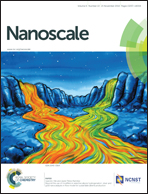A novel strategy to synthesize hierarchical, porous carbohydrate-derived carbon with tunable properties†
Abstract
Hydrothermal carbonization (HTC) of carbohydrate is an interesting candidate for the preparation of carbon materials, as it provides an easy, inexpensive and environmental friendly route. However, it is difficult to prepare porous carbon materials by a straight HTC process. Herein, the solubilising technology of micelles was introduced to direct the HTC of fructose by using an amphiphilic block copolymer, poly-(4-vinylpyridine)-block-poly-(ethylene glycol) (P4VP-PEG), as a structure-directing agent. By this strategy, hierarchical porous carbon materials with tunable properties were prepared. It was found that P4VP-PEG micelles could solubilize fructose and confine the formation of primary carbon domains during a sol–gel process. And the micelle size could be adjusted easily by changing the preparation conditions. Accordingly, the particle size of the obtained carbon materials was effectively tuned from 20 to 100 nm by the direction of the primary micelle size. After calcination, the hierarchical porous carbon materials were evidenced as effective electrode materials for supercapacitor with a capacitance of ∼197 F at 1 A g−1, which was almost four times higher than the carbon materials prepared by a straight HTC process.


 Please wait while we load your content...
Please wait while we load your content...